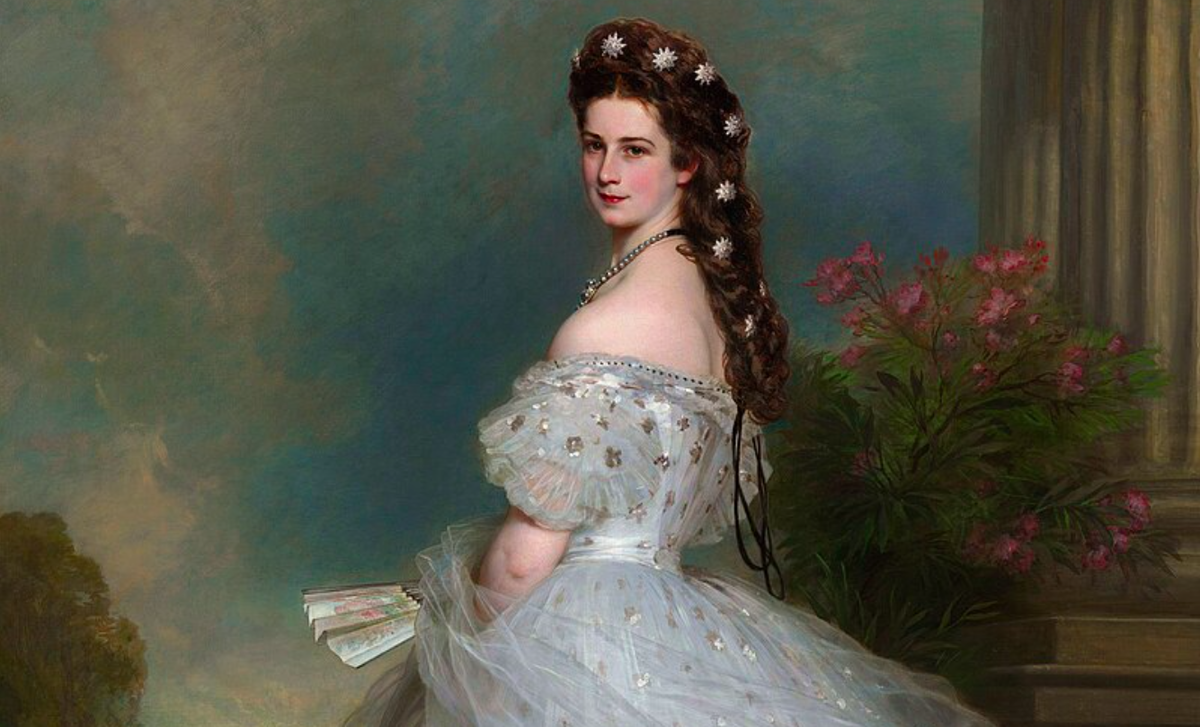The Florence Diamond, in particular, is historically symbolic. Painting by Franz Xaver Winterhalter/Wikipedia CC
A collection of jewelry associated with Empress Sisi of Austria and Zita of Bourbon-Parma, Austria’s last empress, has been rediscovered in Canada, according to recent reports. Zita, the widow of Emperor Charles I, went into exile after the collapse of the Austro-Hungarian Empire in 1918. Among the items is reportedly the Florence Diamond, a 137-carat yellow gemstone historically associated with the Habsburg dynasty, in safe custody.
These jewels were said to have been kept in Canada for decades after the family was exiled during a period of political turmoil. In addition to the diamonds, the collection may also include the crown of Princess Sisi and other items historically associated with the Habsburg dynasty, the report said. Although these details have not yet been officially confirmed by heritage authorities, multiple sources indicate that these items are part of a rediscovered collection.
historical background
imperial family in exile
After World War I, King Charles I and Empress Zita went into exile and lived in several European countries before moving briefly to North America. Charles died in 1922, leaving Zita to look after his personal belongings and manage the family’s affairs.
Records chronicling Gita’s stay in Canada in the 1940s provide a plausible background to how the gem arrived and remained there. According to historical records, she lived there with several of her children while Europe was involved in World War II. Personal archives suggest some valuables were shipped to Canada for safety amid the uncertain political situation.
discovery
What is known and what is reported
The collection is reportedly being kept in a secure facility in Canada and includes items with historical ties to the Zita, Sisi, and the Habsburg dynasty. The legendary Florence Diamond has been specially identified and widely recognized as part of a rediscovered treasure. Reports also suggest that the collection includes Empress Sisi’s crown and other expensive jewelry that once belonged to her, although formal verification has not yet been carried out.
Determining the authenticity of such items requires careful attention, including comparison with historical family inventories, examination of archival documents, and gemological analysis to confirm cut, size, and origin. Until these procedures are completed, the full composition and authenticity of all items will continue to be reviewed.
Specialized archives and gemstone laboratories play a central role in this process. They use historical records, portraits, and correspondence to match the jewelry to inventories maintained by the Habsburgs over the centuries. These measures ensure that items are accurately documented prior to public or official display.
Cultural and historical significance
Why discovery matters
Once authenticated, the jewel will provide a tangible link to the history of the Habsburg royal family and the Austro-Hungarian monarchy. These demonstrate the lengths to which the royal family went to protect their property during exile and war.
Florence diamonds in particular are historically iconic, having been part of European royal collections for centuries. Empress Sisi’s crown is likewise a symbol of the tradition and ritual majesty of the Habsburg dynasty. Recovering these artifacts allows historians and curators to record previously lost chapters of European history. Museums and historical institutions rely on the authentication process to verify claims about high-value items and ensure that they are displayed in an accurate historical context. This rediscovery also raises public awareness about the fate of royal artifacts exiled during political turmoil.
summary
- The collection is said to belong to Empress Zita of Austria and contains works of historical importance.
- The Florentine diamond was identified among the recovered items.
- According to reports, the collection may also include Empress Sisi’s crown and other Habsburg jewels.
- Gita lived in Canada in the 1940s and provided background on the location of the jewelry.
- Full official verification and certification has not yet been completed.
Until the collection is officially authenticated, these discoveries remain a matter of historical interest rather than a fully documented restoration of an imperial property. Scholars, archivists, and gemologists continue to examine items to confirm provenance, authenticity, and historical significance. This rediscovery highlights a deep-rooted fascination with the history of the Habsburgs and European royal families. It also emphasizes the importance of carefully documenting and verifying heritage, especially those displaced during war or exile. If verified, this collection promises to provide historians and the public with direct evidence of one of Europe’s most influential dynasties.








